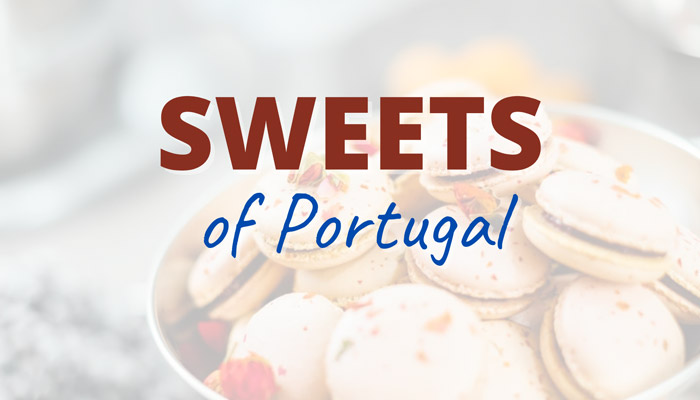Desserts are not just sweets, they are a sincere pleasure that brings not only the joy of taste, but also improves mood and increases the efficiency of the body. Despite the fact that desserts are often associated with health, they actually play an important role in our lives and contribute to our overall health.
If you want to get acquainted with the culinary achievements of Portugal, but you want something sweet, look on the map for “padaria” (bakery) or “pastelaria” (confectionery). The choice of desserts in Portugal is huge. So that you do not get confused by the variety of sweets, we decided to write.
Pastel de Nata
It would be foolish to associate Portugal only with a layered basket of egg cream called “pastel de nata”. However, tourists have promoted this delicacy so much that it can be considered one of the symbols of Portugal, so we will briefly share its history.
In the 18th century, Portuguese monks used egg white to starch their clothes. Accordingly, it was necessary to do something with egg yolks, so the monks embarked on culinary experiments and as a result of one of them appeared “pastel de nata”. The recipe for this sweet was bought by the culinary factory, although nowadays it seems that even housewives have mastered this recipe.
Pastel de nata can be found in any coffee shop or supermarket, but the best ones, you can find them here: Pastéis de Belém. However, control yourself! This dessert is very high in calories!
Pasteis de Feijão
The shape of this sweet resembles pastel de nata, but it includes beans and almonds. What kind of sweetness is it if it is made from beans? Check it out yourself. This dessert is very sweet. If we hadn’t told you, you would never have guessed about this ingredient. Although, the percentage of beans is small and the taste of eggs and sugar interrupts the taste of beans.
This sweet was introduced in the city of Torres Vedras, although the Portuguese believe that the recipe was also invented by the monks long before the official date of its invention.
Leite Creme
A dessert that can be ordered in most restaurants is called “leite creme”. It consists of a sweet egg cream and is often garnished with cinnamon or burnt sugar, which forms a brown crust. It is called a relative of the French creme brulee, but there is one striking difference. Cream is used to create creme brulee, and milk is used to create leite creme. Portuguese delicacy can even be considered dietary (depending on what to compare. Of course!).
Often this dessert can be seen immediately on the showcase of a cafe or restaurant, sometimes in a special refrigerator with a glass door. Yes, leite creme is served cold.
Ovos Moles
The literal translation is “soft eggs”. This dessert also consists of eggs and sugar, but this time they are placed in a soft waffle form. These sweets are made by hand in the form of shells, fish, cones and so on.
People love this dessert for its delicate taste and unique texture, and you can find it all over Portugal, despite the fact that its homeland is considered to be the monasteries of the city of Aveiro. Ovos moles are sold by weight, they can be brought as a souvenir and treated to relatives, colleagues or friends.
Bola de Berlim
It must be hard to surprise someone with donuts. Each country has its own interpretation of this dessert. How do the Portuguese “Bola de Berlim” donuts differ from their Berlin ancestors? They are larger, more magnificent and are filled not with jam, but with custard. Otherwise, the recipe is identical: donuts are fried in oil and sprinkled with sugar or powdered sugar.
Apart from a supermarket or a cafe, you can come across Bola de Berlim on the beach. They are sold by beach vendors, and among vacationers they are very popular.
Of course, in pastry shops you can buy such a donut without filling and fill it with chocolate, for example, but this will no longer be in Portuguese!
Natas do Céu
The name of this delicacy is translated as “heavenly cream”. This is a multi-layered dessert of whipped cream, crumbled cookies, cream and cream. The cream is usually made from egg whites and sugar, which are beaten until a homogeneous mass is formed. The cookies used may vary, but the Maria cookie is the most suitable.
Crumbled cookies and cream are laid out in several layers in turn, and covered with egg cream on top.
Despite the presence of sugar, biscuits and not at all dietary cream, the texture of the cake is very light and literally melts in your mouth, while it is not cloyingly sweet.
Pão de Deus
At first glance, this bun loses its appeal in appearance to other desserts. It seems that there is nothing special about it, but it would not be called “Pão de Deus”, which translates as “God’s bread”, if it were not divinely delicious.
In fact, it really does not include anything special: flour, yeast, eggs, ghee and milk. On top of the bun spread a mass of their mixed coconut flakes, eggs, milk and sugar. Even after a while, the dough of the bun seems moist, and the coconut flavor gives the usual bun a heavenly taste.
Conclusion
The list turned out to be small, although Portugal has a huge amount of sweets and pastries. No wonder the Portuguese love to sit over a cup of coffee and have a bite to eat some yummy. When traveling to Portugal, you can even collect your personal collection of your favorite Portuguese desserts.
Desserts can improve mood and increase happiness. When we enjoy dessert, our brain releases hormones of joy that lead to increased focus, alertness, improved mood, and increased self-confidence. Perhaps because of these feelings, when eating Portuguese desserts, there are such warm associations with Portugal.
